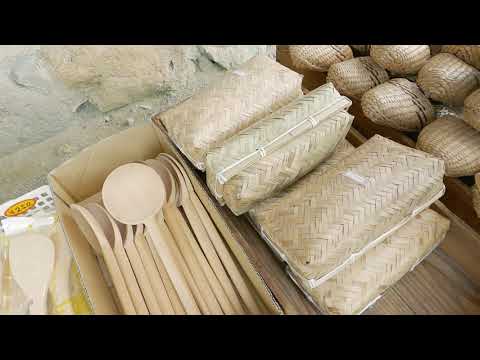Don’t miss our drive in Ouchijuku:
Thank you for watching! We publish videos from Japan.
If you like our videos, please consider subscribing to our channel.
Youtube:
We are also on Twitter and Instagram:
Twitter:
Instagram:
This isolated village boasts thatched-roof houses and natural streets making you feel at one with the people wholived here hundreds of years ago. Nestled in the southwestern mountains of Fukushima, Ouchi-juku is a great spot to visit thanks to its unique charm and history.
This village was established under the post station system of the Edo period, and played a vital role as a rest stop for travelers. In 1981, the well-preserved streets of Ouchi-juku led to it being designated as an Important Preservation District for a Group of Traditional Buildings. It isn’t difficult to see why—the village looks as it did during its heyday. And with no telephone or electric wires above ground, the view from the top of the hill overlooking the village is marvelous. It is a picturesque village where you can lose yourself to the flow of time.
The traveler’s road that used to run through this village was called the Shimotsuke Kaido Route, or the Aizu Nishi Kaido Route. Ouchi-juku not only connected Aizu to Nikko, it also connected Aizu-Wakamatsu to Imaichi, a post town on the Nikko Kaido Route in Tochigi Prefecture. This road was frequented by many travelers as well as by the processions of feudal lords who had to travel to and from Edo periodically. Travelers of the Edo Period rested at the inns of Ouchi-juku to relieve their fatigue.
Nowadays, festivals and events help draw in new visitors. The annual Snow Festival in February turns Ouchi-juku into a pretty candlelit scene. Visit in July to see a procession of dancers dressed in traditional Edo Period costumes, and you might even get to wear a happi (festival attire jacket) and join the locals in their celebrations! And when you’re feeling hungry be sure to try some of the local specialties, which include negi soba (fresh buckwheat noodles eaten using a green onion), stick-roasted char fish, and more. There’s a little bit of everything at Ouchi-juku.
Videos on Ouchijuku:
Ouchijuku / Fukushima in Winter
Ouchijuku / Fukushima in Summer
OUCHIJUKU
How to Get There
Ouchi-juku is best accessed by bus or taxi from Yunokami Onsen Station. From Tokyo, it is about two and a half hours by shinkansen to Aizu-Wakamatsu Station. From here, take a train to Yunokami Onsen Station and then a taxi or a bus to Ouchi-juku.
On the way to Ouchi-juku is Yunokami Onsen, where you can enjoy Japanese hot springs and an open-air footbath.
About Tohoku
Tohoku is the northeast region of Japan’s mainland and it consists of six distinct prefectures: Aomori, Akita, Iwate, Yamagata, Miyagi, and Fukushima. A hidden gem among the tourist areas of Japan, Tohoku has countless treasures for explorers to discover all year round. It contains UNESCO world heritage sites, extraordinary nature, samurai towns and castles, irresistible cuisine, renowned hot springs, impressive festivals, and a fascinating dialect.
Tohoku is unlike any other region due to its location, mountainous landscape and coastal borders so it offers a remarkably unique side of Japan that is often overlooked, making it a must-visit region for travelers looking for a fresh destination.
Japanese bamboo weaving
Bamboo weaving (竹編み, takeami) is a form of bambooworking (竹細工, takezaiku) and traditional Japanese craft (工芸, kōgei), with a range of fine and decorative arts especially in basket weaving.
More than six hundred species of bamboo grow in Japan, including Phyllostachys bambusoides, which can grow to a height of 15–22 m and a diameter of 10–15 cm. Some species are endemic to Japan. Although defined as a subfamily of grasses, bamboo is characterized by its woody culm and a root system that can form either thick, slowly spreading clusters or more aggressive runners.
The bamboo has unique characteristics which naturally give it a positive symbolic significance: it grows straight and fast, is flexible, does not decay quickly and can be used for building shelters, weapons, instruments, and cut into stripes for making containers. Young bamboo stems can even be eaten and have found their way into the Japanese cuisine. Bamboo is a common theme in Japanese literature and a favoured subject of painters. Along with the evergreen pine and plum, which is the first flower of spring, bamboo is a part of the traditional Three Friends of Winter.
(Wikipedia)
Filming Date: August 7th, 2020
#TokyoSmith #fukushima #japan


AloJapan.com